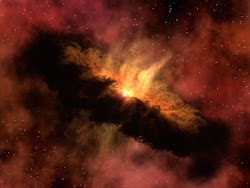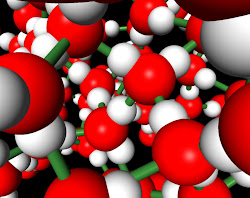Harold G. Coffin
Geoscience Research Institute
Along the western edge of the Columbia River Plateau, next to the Cascade Mountains, a unique state park has been created. The Ginkgo Petrified Forest State Park, located in the State of Washington, is found in a panorama of hills and plains gashed by dry canyons and watercourses. The dark basalt that underlies the whole area shows up starkly in the cliffs along the many abandoned water channels. Although the water that rushed through long ago is mostly gone now, the story told by the remains is a fantastic one that speaks of major flooding and erosion by broken glacial dams and swollen rivers draining from the margins of the continental glacier.
Before we describe the Park in greater detail, an explanation of the name is needed. Ginkgo is an unusual type of tree, sometimes called the Maidenhair tree. Its leaves, which resemble a partly opened Chinese folding fan, are completely diagnostic.
Fossil Ginkgo leaves have been found in several places in the world; the wood itself is rare. Many different species and varieties lived in the past, but only one representative still remains — truly a living fossil! Since botanists discovered live Ginkgo trees in China, the trees have been planted in many parts of the world. Because petrified wood of the Ginkgo tree has been found near the area of the State Park, it seemed appropriate to name the Park after this tree. Some pieces of cut-and-polished Ginkgo wood can be seen in the Park museum. But the country around the Park is a treasure house of petrified wood. Collectors have been combing the hills for many years, and wood is still being found in the gulleys and gulches of these barren slopes.
The Park encompasses several hundred acres where no collecting is permitted. Its annex several miles west of the main park area has walking trails along the hillside to a number of petrified trees buried in the basalt but showing no appearance of being burned. How can this be? No one knows for sure; perhaps the explanation is that the trees were submerged in water. The basalt cooled so rapidly that the wood did not burn.
The most remarkable feature of this Park, however, is the great variety of trees and plants represented. Nowhere else in the world are so many kinds of petrified wood found in so small an area. An examination of the approximately 200 species reveals another unusual fact: these trees and plants are not those expected from one climatic zone. They range all the way from tropical jungle trees to trees found today in the northern plains of Canada and Alaska. Some of the tropical trees are teak, breadfruit, cinnamon, and gum. Others more common to temperate zones and cold climates are redwood, fir, cottonwood, and spruce. Note these interesting plants: Chinese walnut, magnolia, madrona, sassafras, mahogany, yew, and witch hazel. Further, this great variety of plants is not all found growing in one part of the world today, but is scattered on different continents.
The explanation presented in the Park museum is that these trees grew in a broad altitudinal range. According to the present interpretation, the trees from high mountains, those from intermediate hills, and those from tropical lowlands all were washed together into low swamps and lakes by streams and rivers. Thus trees of great variety were mixed together in the basalt beds of Ginkgo Petrified Forest State Park.
The region now varies in elevation from about 1000 feet to 3000 feet above sea level. A number of miles to the west, the Cascade Mountains rise several thousand feet higher. Presently the area experiences cold winters and hot summers. Rainfall is light. The number of indigenous tree species is somewhat limited. If all these many kinds of fossil trees lived together originally in this area, the range in elevation must previously have been much greater than it is now, and the lower areas must have experienced tropical growing conditions.
This interpretation is not entirely satisfactory. There is no place in the world today where so great a variety of tree species grows in such close proximity. The length and diameter of the petrified logs would require more than small streams to move such trees down to the lowlands. Several streams currently flow from the Cascade Mountains into the Columbia. Two of them, the Yakima and the Wenatchee, are of moderate size, but are not able to transport large trees many miles. Especially in the upper reaches, the streams are too small to float such trees. There are no evidences in the basalt beds of large ancient river courses, nor are there extensive deposits of sedimentary material which should accompany a broad river. Petrified driftwood is often found; occasionally an upright petrified tree is seen. These are interpreted as having floated in a lake until they sank to the bottom and were eventually buried by lava.
The great variety of trees from widely varying climatic conditions buried in ash, cinders, and basalt is strongly suggestive of catastrophic conditions as described in the book of Genesis in the Bible. Apparently trees from extensive geographical and climatic areas floated together and were trapped and buried by the volcanic materials. The absence of burning of the wood might indicate rapid cooling by water. The volcanic material is often in the form of pillow basalts which are understood to be produced when volcanic matter flows under water.
Although much has yet to be learned about this amazing petrified forest, a flood interpretation appears to be as scientifically reasonable as that now portrayed by the museum. In these dry coulees and semi-deserts of eastern Washington, a glimpse of the preflood forests and the dynamic processes that buried them has been exposed. It tells a story more of catastrophism than of uniformity.
© 1974 All contents copyright Geoscience Research Institute. All rights reserved.









